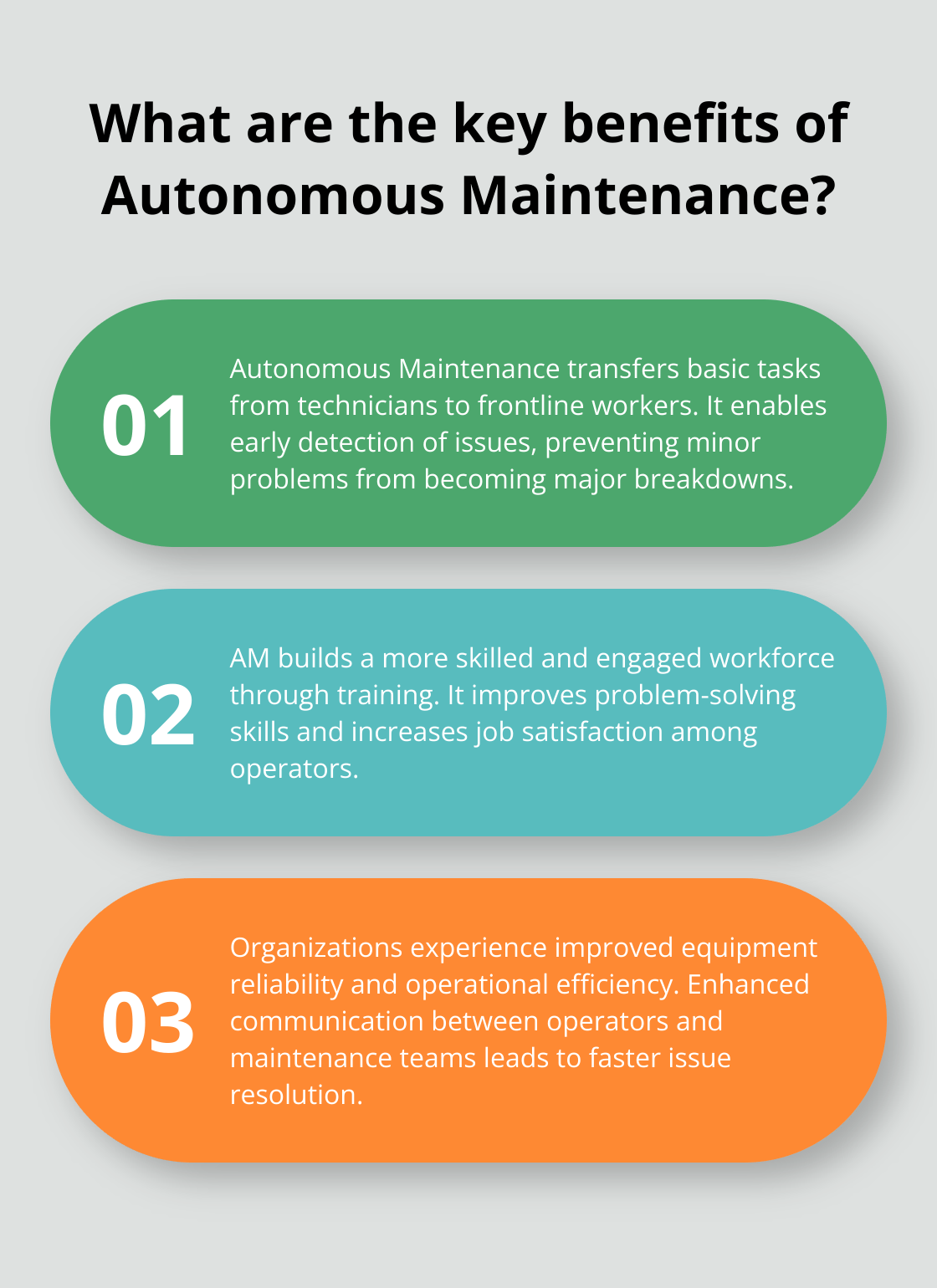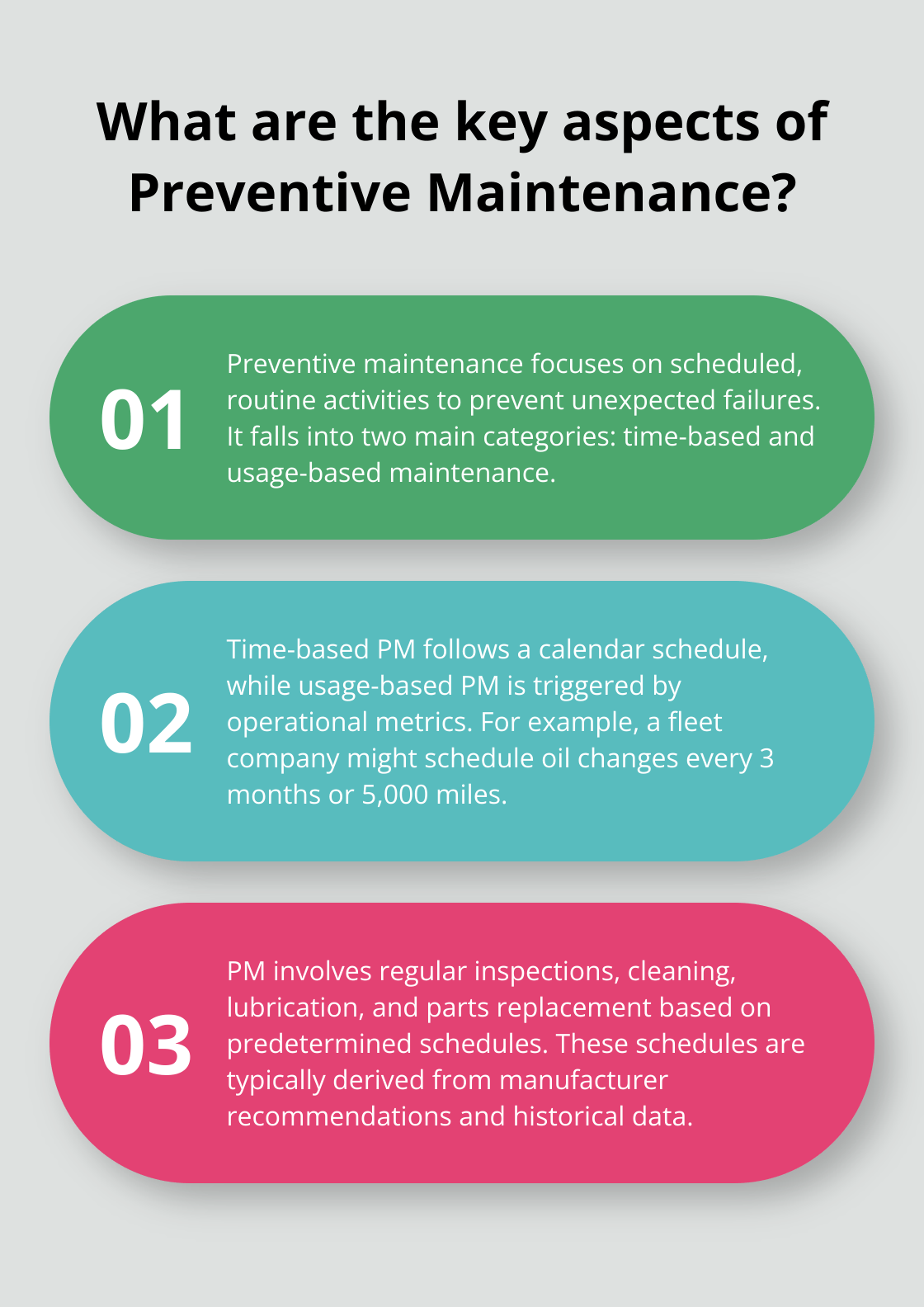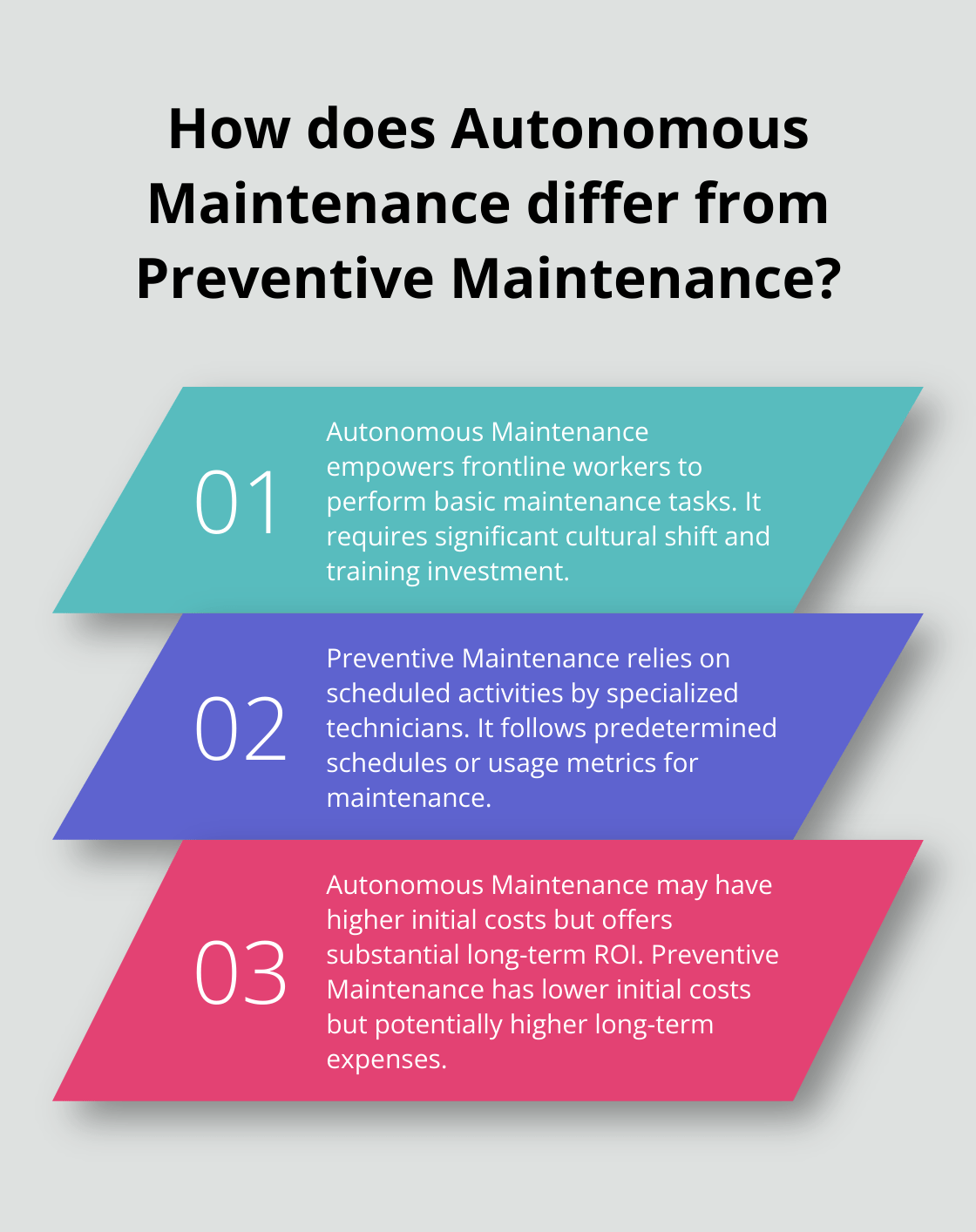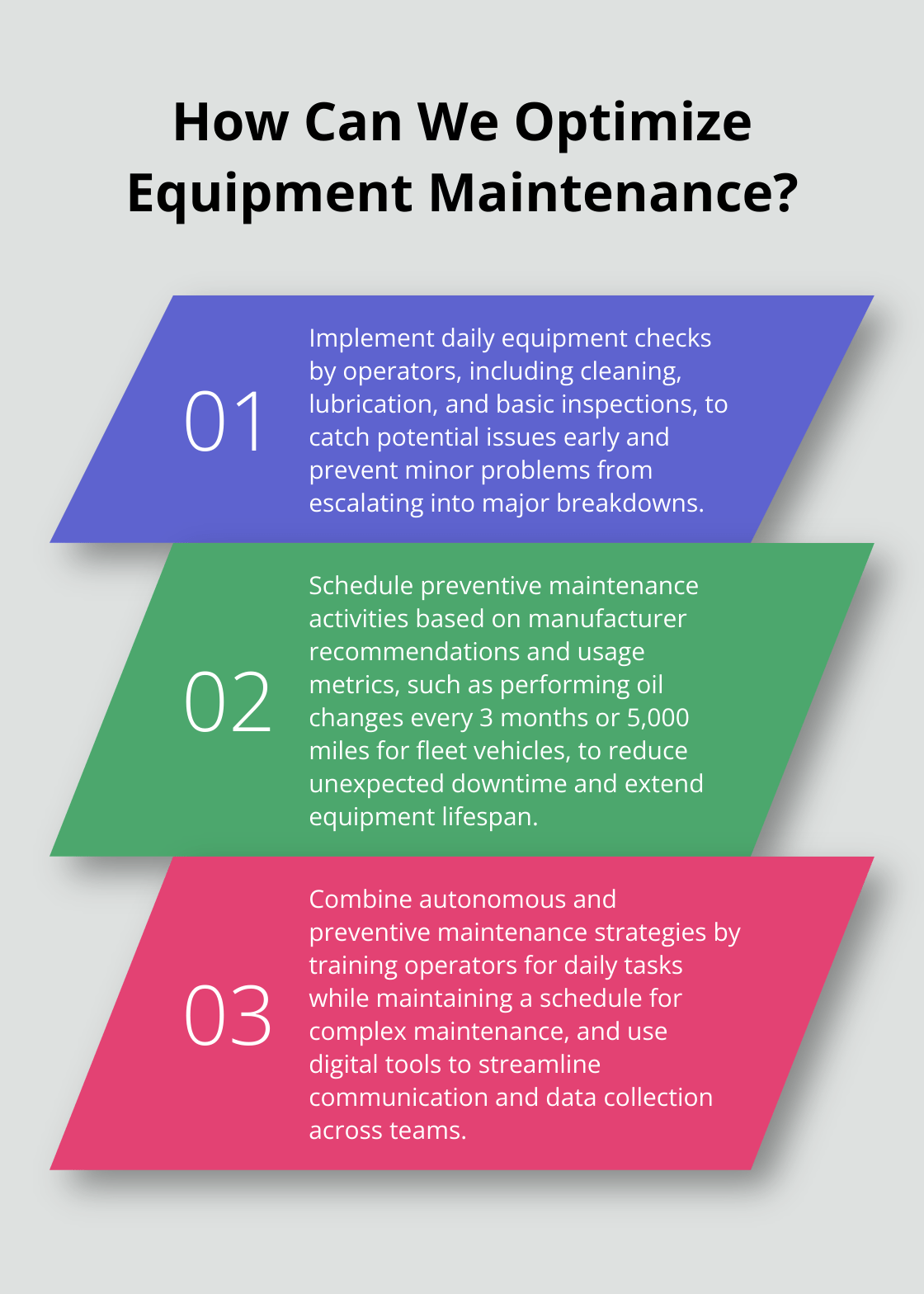Autonomous vs Preventive Maintenance: Key Differences
At Weever Apps, we often field questions about different maintenance strategies. One common comparison is autonomous maintenance vs preventive maintenance.
These two approaches have distinct characteristics and impacts on organizational efficiency. Understanding their key differences is vital for making informed decisions about your maintenance program.
In this post, we’ll break down both strategies and help you determine which might be the best fit for your operations.
What is Autonomous Maintenance?
Autonomous Maintenance (AM) is the key to unlocking improved performance, reduced downtime, enhanced safety, and increased production efficiency. This strategy transfers basic maintenance tasks from specialized technicians to the frontline workers who interact with the machinery daily.
Operator-Led Maintenance
In AM, operators perform routine tasks such as cleaning, lubricating, and conducting basic inspections. This hands-on involvement enables them to detect potential issues early, preventing minor problems from escalating into major breakdowns. An operator might notice unusual vibrations or sounds during their daily checks, prompting further investigation before a catastrophic failure occurs.
Skill Development and Empowerment
AM transcends mere task delegation; it builds a more skilled and engaged workforce. Operators receive training to understand their equipment better, fostering a sense of ownership and pride in their work. This knowledge transfer improves problem-solving skills and increases job satisfaction.
Organizational Benefits
The impact of AM extends far beyond the shop floor. Organizations often experience significant improvements in equipment reliability and overall operational efficiency.
Enhanced Communication
Companies that support their AM initiatives with digital platforms (like Weever Apps) often report smoother communication between operators and maintenance teams. This improved collaboration leads to faster issue resolution and more effective maintenance planning.
Long-Term Advantages
Implementing AM requires a cultural shift and investment in training, but the long-term benefits justify the effort. Reduced downtime, improved quality, and increased productivity make it a worthwhile strategy for many organizations. As manufacturing continues to evolve, AM will play an increasingly important role in maintaining competitiveness and operational excellence.

Now that we understand the fundamentals of Autonomous Maintenance, let’s explore another popular maintenance strategy: Preventive Maintenance. This approach offers a different perspective on equipment upkeep and organizational efficiency.
What is Preventive Maintenance?
Definition and Core Concept
Preventive maintenance is the act of performing regularly scheduled maintenance activities to help prevent unexpected failures in the future. Unlike reactive maintenance, which addresses issues after they happen, PM focuses on scheduled, routine maintenance activities.
Types of Preventive Maintenance
PM strategies fall into two main categories:
-
Time-based PM: This follows a calendar schedule, performing maintenance at fixed intervals regardless of equipment usage.
-
Usage-based PM: This triggers maintenance based on operational metrics like hours of operation, production cycles, or mileage.
For example, a fleet management company might schedule oil changes for its trucks every 3 months (time-based) or every 5,000 miles (usage-based), whichever comes first.
Scheduled Maintenance Activities
PM involves regular inspections, cleaning, lubrication, and parts replacement based on predetermined schedules. These schedules typically derive from manufacturer recommendations, historical data, and industry best practices. A manufacturing plant might schedule monthly bearing inspections for its conveyor systems or quarterly oil changes for its hydraulic presses.
Adoption and Impact
Advantages of Preventive Maintenance
PM offers several benefits:
- Reduced unexpected downtime
- Extended equipment lifespan
- Improved overall reliability
Limitations and Challenges
Despite its advantages, PM isn’t without drawbacks:
-
Over-maintenance: Parts might be replaced before the end of their useful life, resulting in unnecessary costs and downtime.
-
Unexpected failures: PM doesn’t account for breakdowns that occur between scheduled maintenance intervals.
To address these limitations, many organizations now combine PM with other strategies like condition-based maintenance or predictive maintenance. These hybrid approaches use real-time data and analytics to optimize maintenance schedules, striking a balance between preventing failures and avoiding over-maintenance.

As we move forward, it’s important to understand how Preventive Maintenance compares to Autonomous Maintenance. The next section will explore the key differences between these two strategies, helping you determine which approach (or combination of approaches) might best suit your organization’s needs.
How Do Autonomous and Preventive Maintenance Compare?
Implementation and Approach
Autonomous Maintenance (AM) and Preventive Maintenance (PM) represent distinct strategies for equipment upkeep. AM empowers frontline workers to take ownership of their equipment. It involves operators in basic maintenance tasks as part of their daily routines. This approach necessitates a significant cultural shift and investment in training. For instance, a manufacturing plant that implements AM might train its production line operators to perform daily equipment checks, minor repairs, and basic lubrication tasks.

PM relies on scheduled maintenance activities performed by specialized technicians. These activities typically follow predetermined schedules or usage metrics. As an example, a power plant might schedule turbine inspections every 3,000 operating hours as part of its PM strategy.
Cost Considerations and Return on Investment
The initial implementation costs for AM can exceed those of PM due to the extensive training required. However, the long-term return on investment often proves substantial.
PM often incurs lower initial costs but can lead to higher long-term expenses due to potential over-maintenance.
Impact on Equipment Reliability
Both strategies try to improve equipment reliability, but their methods differ. AM’s continuous, operator-led approach often catches minor issues before they escalate.
PM’s scheduled approach can prevent major breakdowns but may miss issues that arise between maintenance intervals.
Employee Involvement and Skill Development
AM places a strong emphasis on employee involvement and skill development. Operators become more knowledgeable about their equipment, which leads to improved problem-solving skills and job satisfaction.
PM typically involves less direct operator involvement, with maintenance tasks primarily performed by specialized technicians. While this approach maintains a clear division of responsibilities, it may limit opportunities for operator skill development.
Hybrid Approaches
In practice, many organizations find that a combination of AM and PM strategies yields the best results. For instance, a food processing plant might implement AM for daily equipment checks and cleaning, while still maintaining a PM schedule for more complex maintenance tasks.
When considering which approach to adopt, organizations should assess their specific needs, equipment types, and workforce capabilities. Digital tools can significantly enhance the implementation of both AM and PM strategies by streamlining communication, data collection, and task management across teams.
Final Thoughts
Autonomous maintenance and preventive maintenance offer distinct advantages for equipment upkeep. Organizations must consider their specific needs, equipment types, and workforce capabilities when choosing between these strategies. Many companies implement a hybrid approach to maximize equipment reliability and operational efficiency.

The future of maintenance practices will be shaped by technological advancements. IoT sensors, artificial intelligence, and machine learning algorithms will enable more precise and data-driven maintenance decisions. These technologies will create more dynamic and responsive maintenance systems.
We at Weever Apps understand the complexities of implementing effective maintenance strategies. Our Connected Worker platform supports both autonomous and preventive maintenance approaches. Organizations can enhance their maintenance practices, improve cross-team visibility, and drive operational excellence with digital solutions.